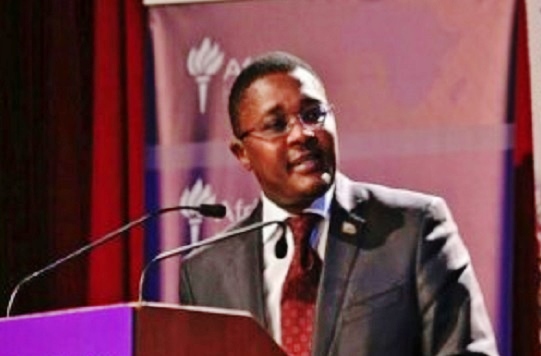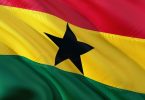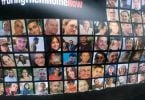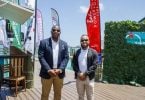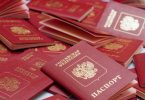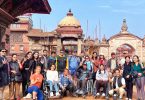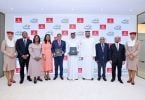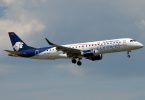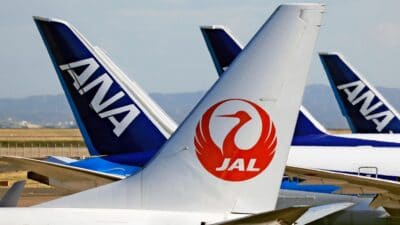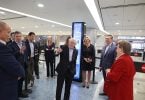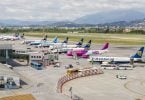BRUSSELS, Belgium – As a «world city» Brussels represents openness, friendliness and freedom to many. Its residents are proud of their diverse city and its 183 nationalities at the heart of Europe and the whole world.
Many Zinnekes1 call it home: people of every color come from everywhere and speak a multitude of languages. This constant mixing was instrumental in forging its values and identity.
MIXITY.brussels will highlight this little oasis of diversity throughout the year 2017. An opportunity to honour the common values that contribute to the multiple identities of Brussels; in particular, the chance for everyone to speak and create a space where this diversity can be expressed in its rich variety.
MIXITY.brussels, a major project geared toward all residents, visitors and lovers of the Brussels Region, is introduced through the concerted action of ministers of four Belgian public authorities: the Brussels-Capital Region, the Wallonia-Brussels Federation, the Flemish Community and the COCOF. This theme year is supported by Minister-President Rudi Vervoort and Minister Guy Vanhengel of the Brussels Government, by Ministers Rachid Madrane and Sven Gatz, who are in charge of promoting Brussels at the level of the Frenchspeaking and Flemish Community and by Minister Fadila Laanan, Minister-President of the COCOF.
It’s a joint initiative of a kind not seen since the 2000 «Brussels, European Cultural Capital» campaign. From January through December 2017, visit.brussels will coordinate and spotlight many Brussels projects in active cooperation with the cultural and socio-cultural spheres in Brussels. Their common denominator: all will convey the rich and diverse dynamic that characterizes European Capital. The idea is also to encourage population participation, in order to turn this ambitious project into a point of regional pride.
1. The MIXITY.brussels project, inspired by the citizens of Brussels and for the citizens of Brussels
Brussels is the second most diverse city in the world, and the first in Europe, according to the 2015 World Migration Report. This is no surprise because more than half of the city’s population has origins extending beyond Belgium’s borders. Some 183 nationalities rub shoulders every day and just about every imaginable language can be heard in public places. The multicultural ferment is evidence of Brussels’ «superdiversity,» which makes a rich melting pot. In the end, there’s no such thing as the typical Brussels resident. People draw from their own roots and benefit from the collaborative multiculturalism of this urban environment.
And diversity is not just a matter of nationalities, far from it. Known for its broad- mindedness, Brussels is also committed to freedom of sexual orientation and has an LGBT community that expresses itself openly. Furthermore, accessibility for people with reduced mobility, the intergenerational context, and the coexistence of different religions provide even more examples of this ubiquitous diversity. This whole ecosystem has naturally made Brussels a crossroads city. This mix of everything, this melting pot at ease with itself, is something to be proud of.
These Brussels-specific character traits are reflected in the public domain as well as in tourist and cultural offerings. Cultural institutions, festivals and artistic events clearly play a prominent role; but they may also emerge from a neighborhood, store, restaurant, religious building, café etc. Counting the number of different languages heard in a single bus on any Brussels route is a very enlightening challenge. The people of Brussels are accustomed to it.
In terms of art, creativity in the respect of differences fosters varied and boundless ambition. So Brussels has undoubtedly earned a place on the map of Contemporary Art destinations, as well as that of Art Nouveau, Art Deco, and even Ethnic Art destinations; with respect to dance, one can just as easily attend a contemporary dance performance at the Mint as an improvised Hip-Hop show.
In a world too often marked by controversies about differences, it is good to remember that the respectful coexistence for which Brussels has been known for many years must more than ever remain a point of pride and a non-negotiable guide in continuing this image of a compelling region that brings people together and charming them. Brussels does not require a single cultural model but instead derives its strength from this (super) diversity. This is what MIXITY.brussels 2017 will highlight in particular throughout the theme year.
Some key figures for the Brussels-Capital Region in 2015
1. 1.175.173 residents
2. 183 nationalities
3. More than 100 languages spoken
4. One out of every three Brussels residents has a foreign nationality (33,9%)
5. The five most common foreign backgrounds are French (15,2%), Moroccan (9,6%), Romanian (8,4%), Italian (7,9%), and Spanish (6,9%).
Source: Brussels Institute for Statistics and Analysis
2. Brussels, a story of diversity written in its DNA
In turn Brussels has been the head residence of the dukes of Brabant, the capital of the Spanish and the Austria Netherlands and more recently, the capital of Belgium and headquarters of the European Union. Since its foundation, Brussels has been molded by this blend of different nationalities and open-mindedness. From the very beginning, it has witnessed the migratory flows that have helped to build Europe and the values that it holds so dear.
As early as the 15th century, Brussels was able to establish itself as the main home of the Sovereign prince, thanks to proactive policies and considerable investments. In the 19th century, Belgium was the 2nd largest industrial powerhouse in the world.
Since the 1950s, the city’s industrial heritage has nurtured a whole new world of multiculturalism, which has continued to establish itself here. Waves of Italians and Spanish, followed by Moroccans, Turks and other nationalities have fed into this mix as they have settled in the capital.
Alongside this, the European Union arrived in 1957, and it was Brussels that was chosen to become its capital. It was soon the city of all Europeans, as well as being a world city.
The extension of the European Union in a series of different phases has continued to boost Brussels’ international character. Today, more than 120.000 people work in Brussels within the context of international organizations.
This unique blend has gradually created Brussels trademark. Thanks to its history and its geographical location, Brussels has quickly taken on the role of international crossroads, making it a vital meeting place where almost every country in the world is represented.
3. The world’s heart beats in Brussels
Much like its history and those compelling statistics, Brussels has developed deep and wide cultural and tourist offerings. In more ways than one, the world’s heart beats in Brussels, and this slogan will be the main focus MIXITY.brussels 2017’s communication.
The gourmet heart beats in Brussels. Fine cuisine with renowned quality and authenticity reflects the population’s diversity. Many starred restaurants, infinite variety, and must- see events (Culinaria, Beer Festival, eat! Brussels) are a few examples of what gourmet Brussels has to offer.
The heart of culture beats in Brussels. With festivals like the Kunstenfestivaldesarts and Europalia, fairs like Art Brussels, dozens of choice galleries and very international institutions like Bozar, Flagey, the Théâtre National or Kaaitheater Brussels can be proud of its cultural offerings and now can hold its own in the ranks of other European cultural cities.
The heart of fashion beats in Brussels. Especially due to the presence of the world- renowned La Cambre school, Brussels has attracted fashion designers for many years. After their studies, many big names in the fashion world settled in the heart of the European capital to begin their professional careers.
The heart of music beats in Brussels. With festivals like Couleur Café and the Brussels Jazz Marathon, concert venues like the AB and Botanique, iconic bars, international ambassadors and a dazzling history, musical offerings in Brussels are flourishing.
The heart of the contemporary dance beats in Brussels. Brussels has earned its status as of the world capitals for contemporary dance. In particular, the reputation of companies such as Rosas and the P.A.R.T.S school brings young dancers from around the world.
Other cultural assets also help to give Brussels this magnetic power and special status on the European and world map, such as Art Nouveau, Art Deco, or comic books. Even though these different faces of Brussels have already been emphasized in the past (especially via theme years – fashion, comic books, gourmet cuisine), MIXITY.brussels will address them all together for the first time from the cross-sectional perspective of diversity, which is decidedly the common point of everything that thrives in Brussels.
4. MIXITY.brussels 2017 events
Throughout the next year, several major events will punctuate and colour Mixity.brussels 2017. Each will feature a different perspective on diversity that will be detailed in all its glory: cultural, religious, sexual, historical, artistic… The first event, «MEET MIXITY. brussels», will provide a foretaste of the program for the year 2017.
First, MIXITY.brussels 2017 created six major events from scratch for this theme year; these eclectic projects will be done mainly in concert with the cultural and socio-cultural world of Brussels. As a prelude, a few months before the official launch of the theme year, the first event is designed to whet the appetite of all local and international visitors for what is to follow during MIXITY.brussels 2017. Named « MEET MIXITY.brussels «, the event is set to take place on Friday, 30 September 2016 at 6:30 pm and will feature a concert by a promising headliner; the introduction invites everyone, regardless of its cultural, religious, ethnic and sexual identity and regardless of any disability, to come together around this unifying theme for a festive evening that is open to the world.
Once the theme year has begun, five other major events are on the schedule. A giant fresco will be painted on a separate wall in Brussels, in order to honor all genres of graphic arts. Voices from all walks of life will gather, interact, and unite for various rhythms as the months go by. A rich schedule will showcase the Hip Hop world in all its forms. Another work of art will highlight the 183 nationalities that call Brussels home. Finally, history of diversity in Brussels will be celebrated in Tram 44 as it heads toward the Museum of Africa in Tervuren.
Second, six large existing events that represent diversity in Brussels will be incorporated into the rainbow of MIXITY.brussels 2017: the Couleur Café festival, the opening of the
House of European History, the «Islam, is also our history,» the Belgian Pride, the reopening of the Royal Museum of Central Africa, and an exhibition at the Jewish Museum of Belgium.
The promotion campaign for the theme year will aim to link these projects under the banner of diversity and unite all of the communities around the common values of Brussels.
5. Neighborhoods: an anatomy of Brussels identity
The neighborhood is a « Part of a city with its own look and a certain commonality. «(Le Petit Robert). Brussels has a unique quality of forging its identity on the basis of multiple separate but related units that exist at its heart. While some districts have long been known for their diversity, others still have many hidden treasures to discover. This is the challenge that MIXITY.brussels 2017 is taking on for the coming year. To accomplish this, a variety of initiatives will be implemented: theme maps and original routes, individual and group tours, walks accompanied by Greeters, etc.
Guided tours
Whether on foot, bicycle, segway or bus, a litany of public guided tours at fixed dates will be scheduled on the calendar. Visitors or curious Brussels residents may register for these guided walks in order to soak up certain aspects of diversity by listening to a professional guide. The visits will also be available for private groups.
6. A call to Brussels residents and Brussels-area associations
Diversity is necessarily everyone’s business in Brussels. That is why visit.brussels, throughout the theme year, wishes to highlight projects originating with the population and local associations. The opportunity for all Brussels residents to build a network fostering constructive exchanges with visitors. Two main initiatives will highlight this dynamic: MIXITY Awards and the recruiting of MIXITY Greeters.
MIXITY Awards
By organizing the MIXITY Awards, visit.brussels wishes to honor the best associative, cultural, and sporting diversity initiatives that contribute to the national and international reputation of Brussels.
It will be a matter of projects that feature interaction between different audiences; that convey to younger generations the values of diversity and living together in harmony; that focus on diverse backgrounds and sexual orientations and freedom of worship; that are disabled-friendly, and even those that open opportunities for intergenerational dialogue.
These projects must be completed between October 2014 and October 2016, and will be split into several categories:
1. ‘MIXITY Tof Event’ : will recognize two events intended for the general public. One prize will honor a «small» association (less than three employees), while the other will recognize a medium or large association (three employees or more).
2. «MIXITY Best Practice »: will recognize shadow work, an approach related to the diversity, in-depth work on a daily basis. This award will also be split into two parts. One prize will honor a «small» association (less than three employees), while the other will recognize a medium or large association (three employees or more).
3. «Corporate MIXITY Project» : recognizes the work of a private business as a patron of the arts geared toward diversity, with or without its staff.
4. «Audience award» : «MIXITY Tof Event» and «MIXITY Best Practice» categories based on the last six projects selected.
With the exception of the Corporate category receiving no money, the rewards for nominees and winners will be of different amounts, with an overall budget of € 200.000. The procedure and terms and conditions will be online on June 3 2016.
Wishing to offer a custom tourist experience off the beaten path, Brussels Greeters form a network of local volunteers that welcome visitors and introduce them to the Region’s special places. These enthusiasts share their love for their neighborhoods and their favorite spots, thereby tearing down the natural barriers that exist between the locals and tourists. A rewarding human adventure which promotes sustainable and alternative tourism based on direct interactions between locals and visitors.
MIXITY.brussels 2017 is actively looking for new volunteer ambassadors who speak German, Italian, Spanish, Arabic, Turkish, Russian, Mandarin, Swedish, Czech, Hebrew, Greek, Portuguese, or any other world language to join the existing network of Greeters.
Since there are almost as many stories of diversity in Brussels as there are residents, they will highlight Brussels’ diverse assets from their points of view.
In order to join the big family of Greeters in Brussels – there are more than a hundred – and become a MIXITY Greeter, visit: www.brusselsgreeters.be/devenir-greeter.php (complete the form and specify «Brussels diversity year» in the interests section).



